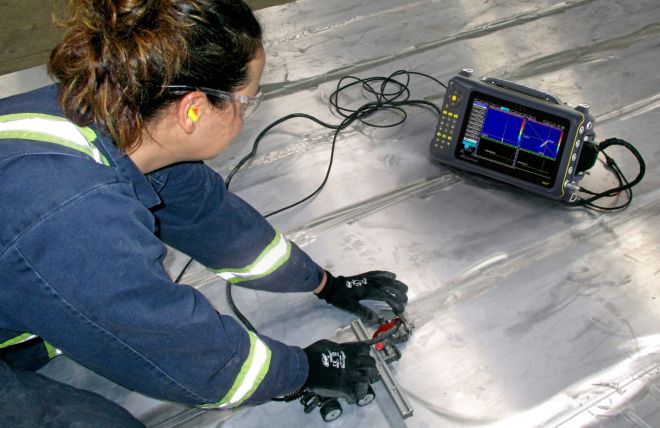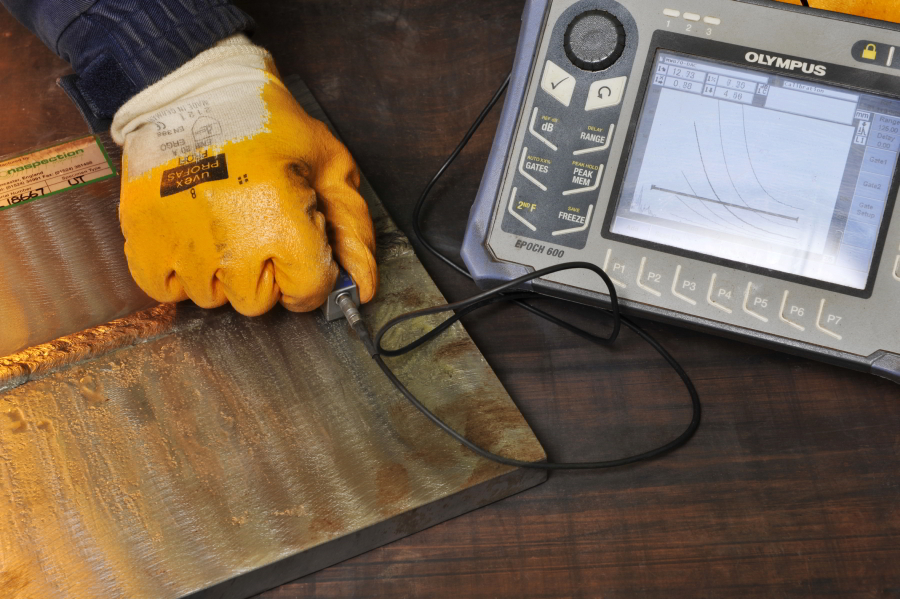In the realm of industrial quality assurance, ensuring the integrity and reliability of materials is paramount. This is where frequency sweep methods in ultrasonic inspection come into play. These methods are crucial for detecting flaws and ensuring that materials meet rigorous safety standards. By understanding the intricacies of frequency sweep methods, industry professionals can enhance their inspection processes, ensuring both efficiency and accuracy.

What is Ultrasonic Inspection?
Ultrasonic inspection is a non-destructive testing (NDT) technique used to evaluate the properties of a material without causing any damage. It involves sending high-frequency sound waves into a material and analyzing the reflected waves to detect flaws or changes in material properties.
How Frequency Sweep Methods Enhance Ultrasonic Inspection
The frequency sweep methods are a vital component of ultrasonic inspection. By varying the frequency of sound waves, inspectors can obtain a more comprehensive picture of the material being tested. This technique allows for the detection of smaller defects that might be missed when using a single frequency.
Why is Frequency Sweep Important?
Using a frequency sweep enables the detection of a broader range of defect sizes and types. Different frequencies interact with materials in unique ways, allowing for more detailed inspections. This is especially important in industries where safety is of utmost importance, such as aerospace and automotive sectors.
The Science Behind Frequency Sweep
By sweeping through a range of frequencies, ultrasonic devices can capture more data about the internal structure of a material. This data is analyzed to identify any inconsistencies or defects, ensuring that the material meets the necessary quality standards.
Applications in Various Industries
Frequency sweep methods are utilized across numerous industries. For instance, in the construction industry, they are used to inspect the integrity of concrete structures. In manufacturing, these methods help in quality control of metal parts. Each application requires specific frequency settings, which are tailored to the material and the type of defects being investigated.
Benefits of Using Frequency Sweep Methods
The primary advantage of using frequency sweep methods is the increased accuracy and reliability of inspections. By covering a broad frequency range, inspectors can detect defects that might otherwise go unnoticed. Moreover, this method reduces the likelihood of false positives, saving time and resources.
Challenges in Frequency Sweep Methods
While frequency sweep methods offer numerous benefits, they also come with challenges. One of the main challenges is the need for precise calibration of ultrasonic devices to ensure accurate readings. Additionally, interpreting the data obtained from frequency sweeps requires specialized knowledge and expertise.
Overcoming Challenges
To overcome these challenges, ongoing training and certification for inspectors are crucial. This ensures that they are equipped with the latest knowledge and skills required to perform inspections accurately. Furthermore, advances in technology continue to enhance the capabilities of frequency sweep methods, making them more user-friendly and efficient.
Technological Advancements
Recent technological advancements have greatly improved the effectiveness of frequency sweep methods. Modern ultrasonic devices are equipped with advanced software that automates much of the data analysis process, providing inspectors with more accurate results in less time.
Future Trends
Looking ahead, the future of frequency sweep methods is promising. As technology continues to evolve, these methods will become even more refined, providing industry professionals with more precise and reliable inspection tools.
How to Implement Frequency Sweep Methods
Implementing frequency sweep methods in your inspection processes is a strategic decision that can greatly enhance your quality assurance capabilities. It involves selecting the right equipment, training personnel, and establishing protocols for regular inspections. For guidance on setting appropriate inspection frequency, visit inspection frequency definition.
Getting Started
To get started, it’s essential to assess the specific needs of your industry and the materials you work with. This will inform your choice of equipment and frequency settings, ensuring that your inspections are both effective and efficient.

FAQs
What are frequency sweep methods?
Frequency sweep methods involve varying the frequency of ultrasonic waves during inspection to detect a wide range of defects in materials.
Why use frequency sweep in inspections?
Using a frequency sweep allows for more comprehensive inspections by covering a broader range of defect sizes and types.
How do frequency sweep methods improve accuracy?
By using multiple frequencies, these methods reduce the likelihood of missing defects, leading to more accurate and reliable inspection results.
For more detailed insights on optimal frequency settings, you may explore optimal frequency and learn about common settings used in the industry. Additionally, understanding the importance of frequency calibration is crucial for improving inspection accuracy.
This article contains affiliate links. We may earn a commission at no extra cost to you.
